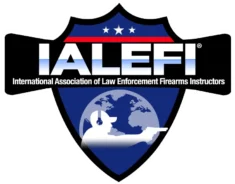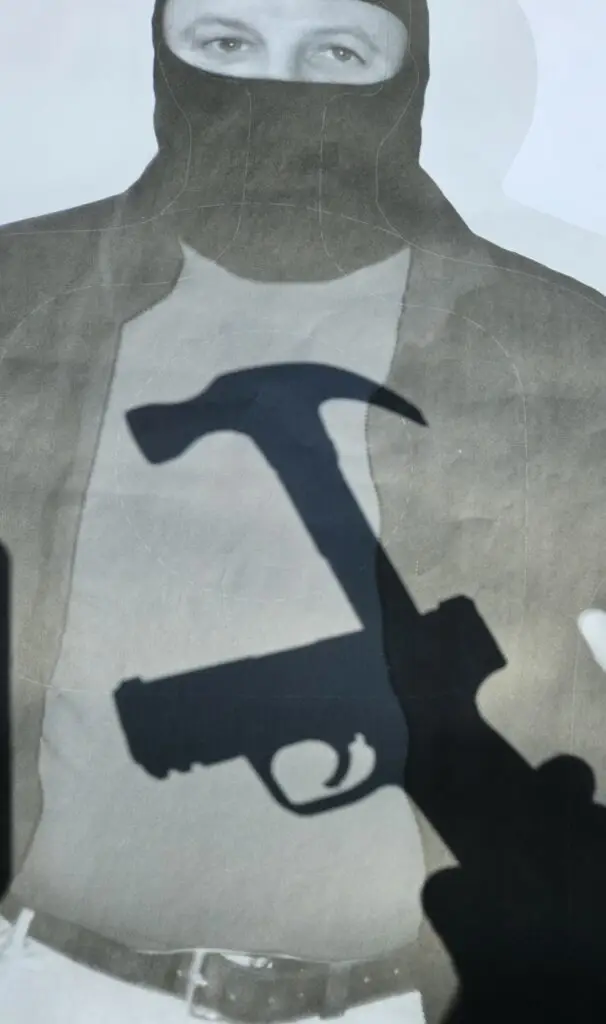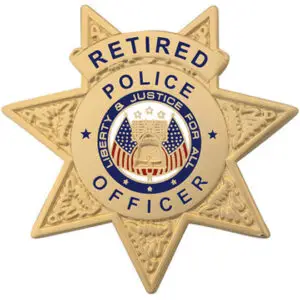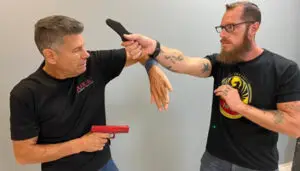A pistol-shaped hammer? Just when I think I’m doing well as a police firearms instructor, I find out I’ve over-looked a critical component of the deadly fight – hitting someone with an unholstered impact tool. Yes, hitting a suspect with a firearm. We’ve talked about but never really practiced it. Striking a suspect with a firearm means that I’m in a pretty bad situation. Possibly, the suspect is inside of elbow distance, my firearm is unholstered, deadly force is justified, innocents are preventing a shot, the suspect has some control over the firearm or a malfunction has occurred. What now? I’m no DT instructor but here are some of ideas.
A weapon strike is physically hitting someone with a loaded or unloaded firearm with the intent of incapacitating or disrupting them in some way other than shooting them, or until they can be shot. Remember that the firearm should not be used to strike a suspect unless deadly force is justified. Since deadly force is justified in such an event, our training focus must be equally high. Train in a controlled manner with plenty of input from your DT experts. Poorly addressed, the result might be a charge of gross negligence, so make sure you can articulate the action and training.
Using a training pistol of course, a muzzle strike to the face, neck or chest could be very effective in creating a small window of time and distance for a follow-up action. The trigger finger is completely removed from the trigger guard to prevent slipping onto the trigger during the punch. But, “What if I can’t remove it prior to striking?” If the pistol is out of the holster and you’re fighting for your life, deadly force applies anyway. Use the muzzle as the strike point and try to punch the pistol through the person. Don’t tap them with the muzzle, hit and hit hard. Retract the firearm quickly after the strike. The energy directed onto a small surface area like the muzzle can have great effect.
We can also use the dust cover and slide like a hammer, striking the suspects face or head. Using a training pistol and bag, place the trigger finger outside of the trigger guard and hit hard. Immediate recover and respond as necessary. Always grip the pistol very tightly. A loose hold can cause a sprained wrist, injure fingers, or a dropped gun. I would stay away from striking with the magazine floorplate if possible only because it could break or unseat. But if that’s all you got, hit and hit hard.
We talk about striking with a firearm if needed but rarely, if ever, teach it. Uncomfortable? Yes. Necessary? You bet.
Join the voices of our much-needed professional training response at www.IALEFI.com.



